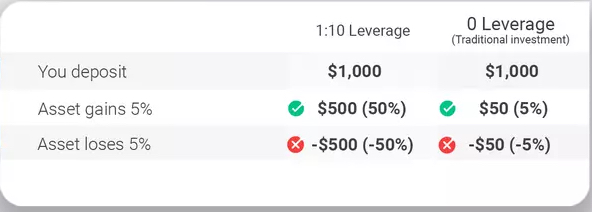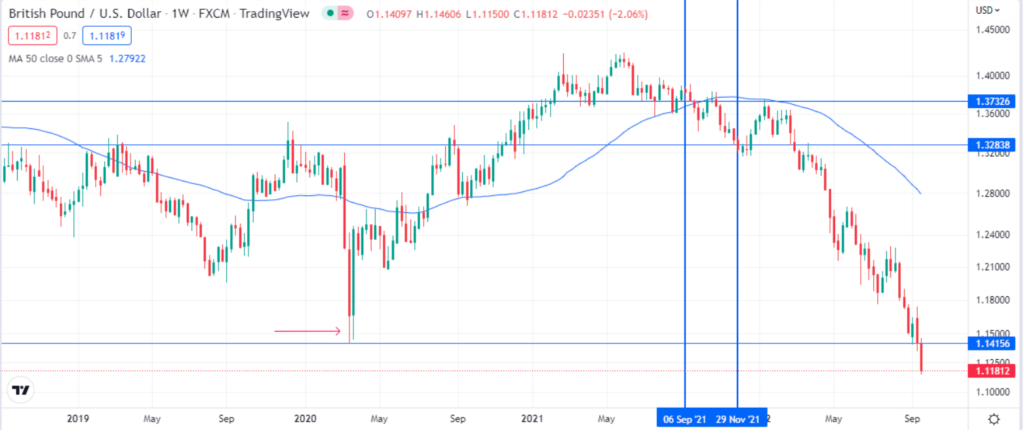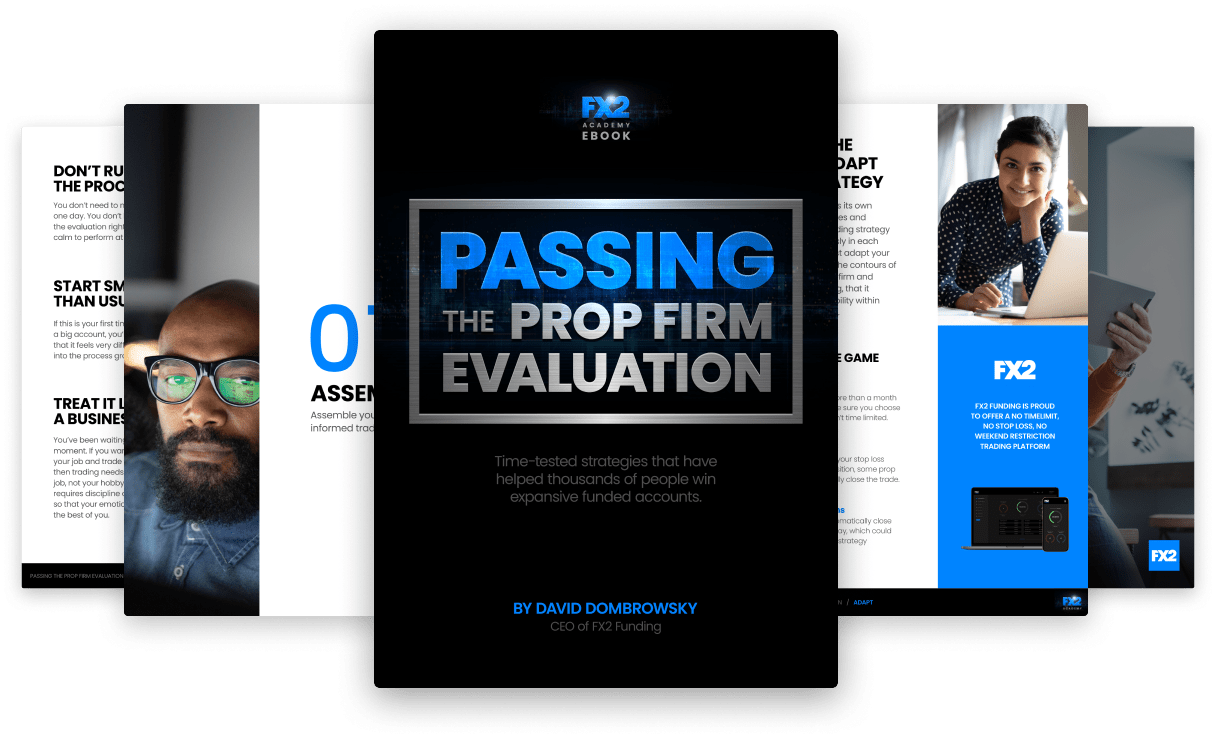Read about using fractal indicator in trading. Our experts explained a possible fractal trading strategy for your best outcomes. Learn how to trade with fractals on the Index Fundings Blog.
Trading has become increasingly popular thanks to the leverage offered by various brokers. The soft loan magnifies the deposited capital, thus allowing traders to open big trading positions that their capital may not handle. Additionally, it helps magnify potential winnings for higher payouts. However, leverage is a double-edged sword that, if misused, can be the source of pain and anguish while trading the financial markets.
Simply put, leverage is a credit that brokers provide their clients to place market orders significantly bigger than what the actual deposit can handle. As a result, its exact size can vary from as little as 1:2 to highs of 1:1000 offered by some brokers.
When one deposits $500 into a trading account, they can only trade positions worth $500 if they don't choose to use leverage. The lack of leverage makes it extremely difficult to sell and buy many instruments at a time, given the high margin requirement.
However, with leverage of, say, 1:200, the initial $500 is multiplied to (200 x 500) $100,000. This means one can trade instruments worth $100,000 instead of $500 worth of financial instruments while trading without leverage.
With leverage, one can deposit $100 into a trading account and still be able to trade with a 0.01 lot position. Leverage as low as 1:10 magnifies $100 to $1,000, making it possible to open positions worth $1,000 instead of being limited to buying and selling instruments worth $100.
While leverage helps traders place much bigger positions while trading financial instruments, it also increases the prospects of making much more money, given its magnifying effect. Nevertheless, leverage also magnifies losses if one is on the wrong side of the trade.
Let's say there are two traders with $1,000 in a trading account; one decides to trade with a leverage of 1:10, and the other opts to trade outright without leverage.
The trader with leverage will have his trading account magnified at a ratio of 1:10, resulting in a trading balance of $10,000.

Source: Admiralmarkets.com
If both are trading the same asset and its price increases by 5%, the trader whose capital is magnified by 1:10 leverage will end up with a profit of (1000 x10 x5/100) $500. The profit margin is relatively high, considering one started with just $1000 as initial capital. The trader who opts to trade without leverage will end up with a profit of $50 (1000x5/100). From the example above, it is clear that 1:10 leverage magnifies gains ten times.
Now let's consider the asset price declining by 5%. The trader with leverage will incur a loss of $500, which is half the amount of capital invested. In contrast, a trader who chooses not to use leverage will end up with a loss of $50.
Therefore, it is clear that leverage magnifies gains and losses in equal measures, thus the double-edged sword comparison.
People opt to trade the forex market without leverage for various reasons. One main reason is that it reduces risk exposure as one does not face the risk of magnified losses, as is the case while using leverage.
Additionally, no leverage forex trading is standard for traders or institutional investors with large trading balances of more than $100,000. With such large amounts, investors won't be comfortable taking risks with highly leveraged trades. Therefore, they would opt to trade without leverage, allowing them to absorb losses without losing so much in the trading account.
A 0.2% change in the price of a currency pair might seem small but can significantly impact a trading account balance depending on the amount of leverage one uses.

Source: axiory.com
The chart above shows that a 0.2% change in an account with 5:1 leverage can result in a 1% change in the trading account balance. For example, if someone had deposited $1,000 into a trading account, 5:1 leverage would result in $5,000 worth of trading capital. Consequently, a 1% loss would be worth $50. However, a person who did not use leverage would incur a loss of just $10.
Now consider traders with large trading accounts of, say, $300,000. A 1% loss without leverage would be $3,000. However, if the account is leveraged at 5:1, the loss would be $15,000 (5 X 300,000 X 1/100), which is relatively high. While a 1% loss might seem quite low, it might occur in minutes, considering how volatile the forex market can be.
Consider the GBPUSD chart below. Price closing below the 50-day moving average on September 6 signaled the start of a downtrend. A trader convinced that the price will continue edging lower as part of the new trend might have opened a sell position on November 29. The price retraced to the 1.32 level as a result.

Source: Tradingview.com
Instead of GBPUSD edging lower after November 21, it reversed and started moving up, disregarding the underlying downtrend. As a result, a bounce back to the 1.37 level amounted to a 3.7% bounce back. Consequently, a trader who had entered a sell position at the 1.32 level ended up recording a 3.75% loss from the prevailing sell position.
Let's assume the trader had $1,000 and was trading without leverage. The total loss from a single position would amount to $37. However, if the trader had leveraged the account by 1:10, the loss would be $370 (10 x 1000 x 3.7/100), more than a third of the total invested capital.
From the example, a small percentage change in a currency pair significantly impacts the trading account if one is on the opposite side of the trade.
In addition, non-leverage trading is popular with people not looking to earn a living out of forex, thus not in search of quick magnified profits. Therefore, traders want to only make a small profit on their invested capital without taking serious risks. Earning 1% on a monthly trading account might not be impressive for professional traders hoping to grow their trading account into a high-yielding deposit account. The prospect of earning 1% a month or 12% a year is more than enough for such traders not looking for quick bumper returns in the short term.
There is no definite answer as to whether leverage is terrible or good. It all boils down to the underlying situation and the trading strategy one deploys in the forex market. Financial targets and capital are also important factors that influence most decisions on using or not using leverage.
For traders starting with small amounts, say $100 to $1000, leverage could be excellent if one plans to make a living out of earnings trading various currency pairs. However, it is recommended to use small leverage between 1:10 and 1:100.
Leverage will go a long way in magnifying the gains out of the winnings. Likewise, small leverage will help lower losses by not magnifying them too much. While using more leverage increases the prospects of generating more profits, the risk of being wiped out over a short period is also high. This is due to the magnifying aspect of losses.
For traders looking to trade with large sums of money, non-leverage trading is one way to keep risk low. Additionally, traders not looking for quick profits over a short period can avoid the soft loan and opt to trade outright using the underlying capital.
While leverage is often considered a double-edged sword, it is not bad. Its effectiveness and liability depend on the trader and the strategy deployed. Experienced traders who know what they're doing and deploy sufficient risk management strategies can use leverage to magnify gains while averting the risk of incurring significant losses.
It is vital to consider the deposit amount and how much you are willing to lose before settling on leverage trading. It is also essential to settle on a leverage ratio you are comfortable with. For example, if you are a conservative trader and don't like taking big risks, leverage between 5:1 and 10:1 would be more than enough.
Additionally, non-leveraged forex trading does not eliminate all the risks. Instead, it only reduces risk exposure, making it easy to grow an account gradually without facing the prospect of being wiped out over a short period. However, a trading account can still be wiped out while trading without leverage if one does not rely on proven trading strategies and deploy solid risk management strategies.

Read about using fractal indicator in trading. Our experts explained a possible fractal trading strategy for your best outcomes. Learn how to trade with fractals on the Index Fundings Blog.
Are you thinking about using the breakout strategy? Check out tips on breakouts trading from our experts on Index Fundings Blog. Read about false breakouts and build your winning strategy.
Read about news impact on Forex. How to understand forex news? Explore how to trade the news in Forex market: trading strategy from our experts on the Index Fundings Blog.
What is a stop-loss and how to use it? How to determine stop-loss and where to set it? Difference between the stop loss and stop limit on the Index Fundings Blog.
Read about emotions in trading and check out how can you master your trading psychology. Build your trading confidence with our tips on trading psychology.
Check out the best indicators for swing trading in our article and trade with maximum profits. Top technical indicators for swing trading on the Index Fundings Blog.
Indicators and tools that forex traders use to identify the direction of the trend. Read how to determine whether a currency pair is in a trending market on the Index Fundings Blog.
Day trading with $1000: how to start day trading with 1000 dollars, tips on how not to lose, and how much can you make. Strategy for small day traders on the Index Fundings Blog.
What is range trading? How to identify the range? What range trading strategy to choose? Find the answers to these questions on the Index Fundings Blog.
How to be a successful scalper? Check out our scalping tips and techniques. Read our Do's and Dont's and scalp successfully with Index Fundings.

Notifications